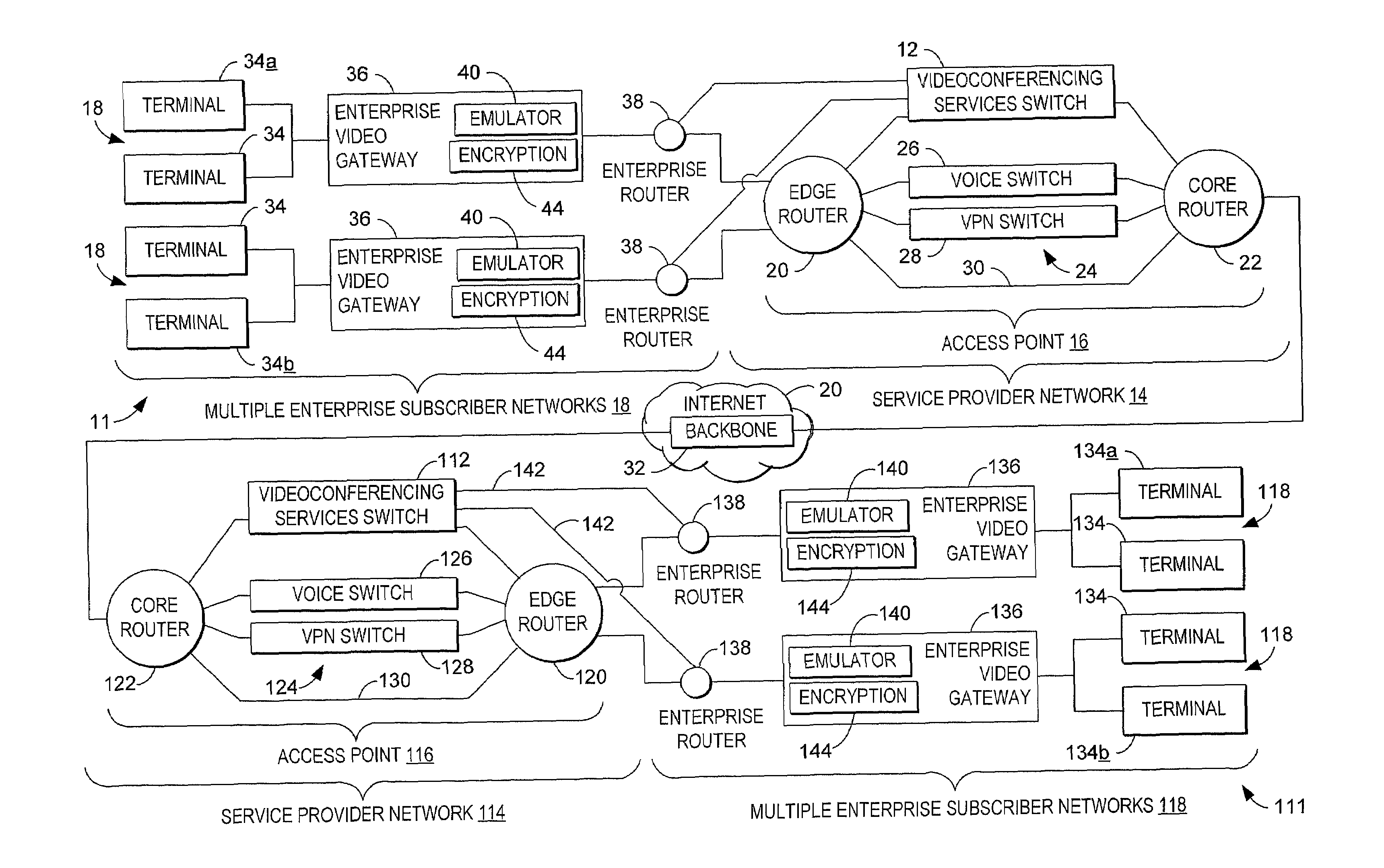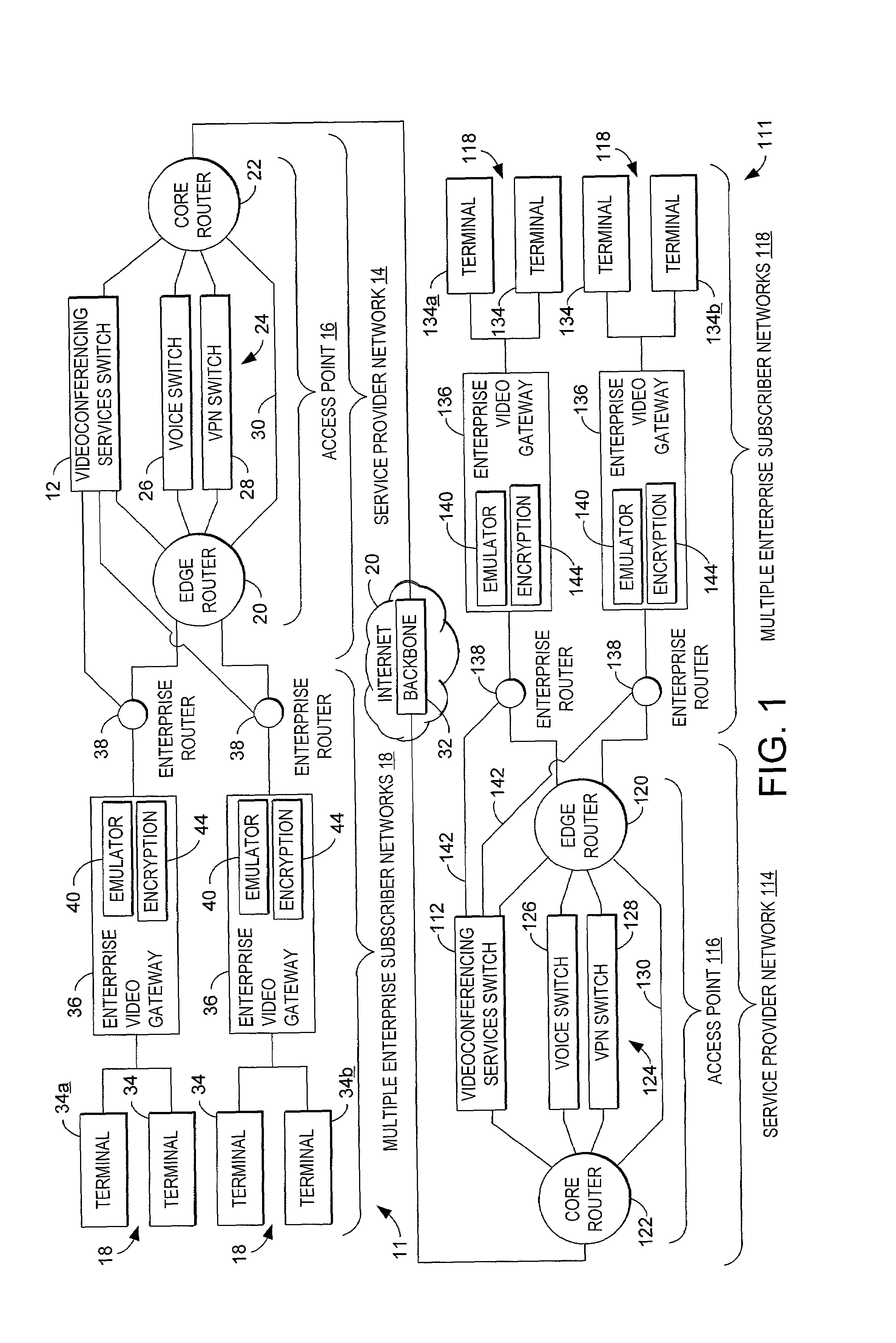Multiple subscriber videoconferencing system
- Summary
- Abstract
- Description
- Claims
- Application Information
AI Technical Summary
Benefits of technology
Problems solved by technology
Method used
Image
Examples
Embodiment Construction
[0026]Referring initially to FIG. 1, a videoconferencing system according to one embodiment of the present invention is shown generally at 10. System 10 typically includes a videoconferencing services switch (VSS) 12 positioned on a service provider network 14 at an access point 16, typically a point of presence (POP). Switch 12 is configured to register multiple enterprise subscriber networks 18 for videoconferencing services, receive subscriber-specific settings for each subscriber 18 related to security and management of the videoconferencing calls from that subscriber, and process videoconferencing calls from each subscriber based on the associated subscriber-specific settings.
[0027]Service provider network 14 typically includes a packet-switched Internet Protocol (IP) network through which multiple enterprise subscriber networks 18 may access a global IP network 20, such as the Internet 20. Typically, the service provider network 14 includes an access point 16, such as a POP 16...
PUM
 Login to View More
Login to View More Abstract
Description
Claims
Application Information
 Login to View More
Login to View More - R&D
- Intellectual Property
- Life Sciences
- Materials
- Tech Scout
- Unparalleled Data Quality
- Higher Quality Content
- 60% Fewer Hallucinations
Browse by: Latest US Patents, China's latest patents, Technical Efficacy Thesaurus, Application Domain, Technology Topic, Popular Technical Reports.
© 2025 PatSnap. All rights reserved.Legal|Privacy policy|Modern Slavery Act Transparency Statement|Sitemap|About US| Contact US: help@patsnap.com



